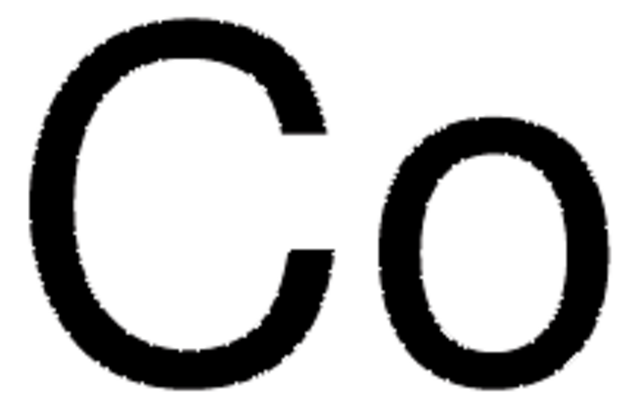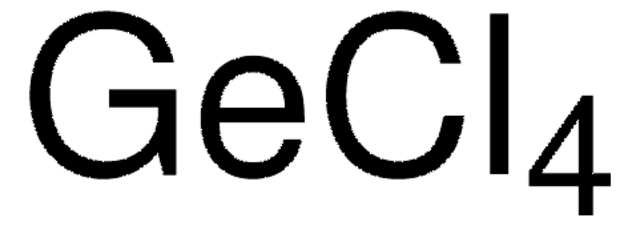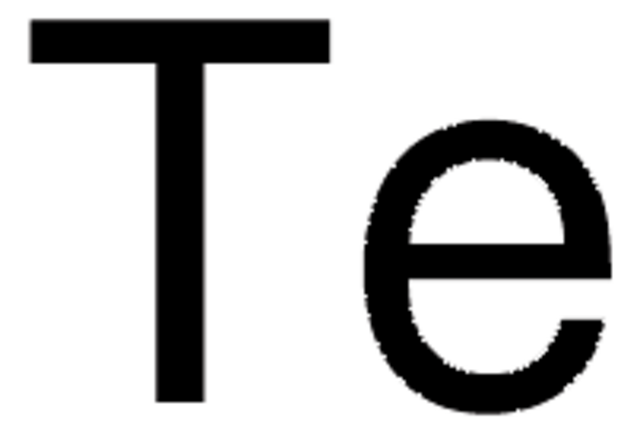327395
Germanium
powder, −100 mesh, ≥99.999% trace metals basis
Synonym(e):
Elemental germanium
About This Item
Empfohlene Produkte
Qualitätsniveau
Assay
≥99.999% trace metals basis
Form
powder
Widerstandsfähigkeit
53 Ω-cm, 20°C
Partikelgröße
−100 mesh
bp
2830 °C (lit.)
mp (Schmelzpunkt)
937 °C (lit.)
Dichte
5.35 g/mL at 25 °C (lit.)
SMILES String
[Ge]
InChI
1S/Ge
InChIKey
GNPVGFCGXDBREM-UHFFFAOYSA-N
Suchen Sie nach ähnlichen Produkten? Aufrufen Leitfaden zum Produktvergleich
Verwandte Kategorien
Anwendung
Signalwort
Danger
H-Sätze
Gefahreneinstufungen
Aquatic Acute 1 - Aquatic Chronic 2 - Flam. Sol. 1 - Repr. 2 - STOT RE 2 Oral
Zielorgane
Kidney
Lagerklassenschlüssel
4.1B - Flammable solid hazardous materials
WGK
WGK 3
Flammpunkt (°F)
Not applicable
Flammpunkt (°C)
Not applicable
Persönliche Schutzausrüstung
Eyeshields, Gloves, type P3 (EN 143) respirator cartridges
Hier finden Sie alle aktuellen Versionen:
Besitzen Sie dieses Produkt bereits?
In der Dokumentenbibliothek finden Sie die Dokumentation zu den Produkten, die Sie kürzlich erworben haben.
Kunden haben sich ebenfalls angesehen
Artikel
Technologies are an integral part of our lives and we rely on them for such things as communication, heating and cooling, transportation, and construction. Improvements to technologies have made what they do for us more precise, automated, efficient, and powerful.
In recent years, the price of tellurium, a key component in the bestperforming thermoelectric materials, has increased significantly, leading to the question, “Is it economically viable to produce thermoelectric generators on an industrial scale?
The price of tellurium, a key component in many thermoelectric materials, has risen in recent years, leading to the search for more cost-effective substitutes. This article presents silicide materials as a cheaper potential alternative.
Unser Team von Wissenschaftlern verfügt über Erfahrung in allen Forschungsbereichen einschließlich Life Science, Materialwissenschaften, chemischer Synthese, Chromatographie, Analytik und vielen mehr..
Setzen Sie sich mit dem technischen Dienst in Verbindung.















